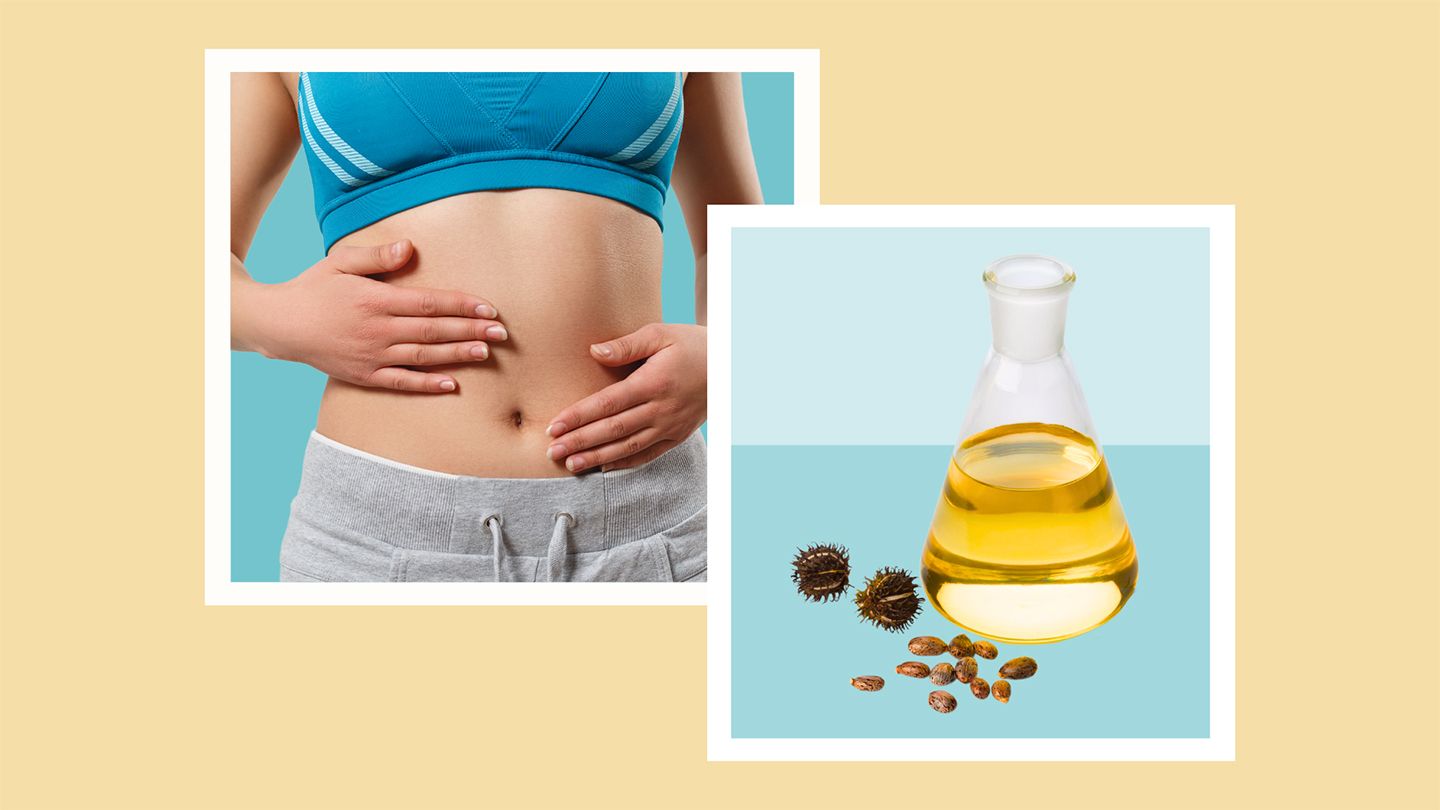Social media influencers are putting oil in their belly button in hopes of seeing benefits.
As described on platforms like TikTok, navel oiling (also known as navel pulling) involves placing a few drops of castor oil (an odorless, yellowish vegetable oil with anti-inflammatory properties) in the belly button or massaging castor oil on the abdomen.
In one post, @EdensGardenEssentialOil claims the practice improves sleep and gut health, reduces constipation and pain, and increases energy. In another post, @LunaLuxe_2 asserts that navel pulling helps with digestion, cramps, and bloating.
Navel oiling may be trending, but the practice has been around for thousands of years. It’s rooted in ayurveda, an ancient system of traditional medicine that originated in India.
In ayurveda, navel oiling is known as nabhi chikitsa, or “treatment of the belly button region,” says Meena Makhijani, DO, a certified ayurveda practitioner and board-certified family medicine, geriatric medicine, and integrative medicine physician at UCLA in Calabasas, California.
“TikTokers are realizing the benefits of these ayurvedic practices and packaging them in catchy ways,” says Dr. Makhijani.
How Is Belly Button Oiling Being Discussed Online?
Influencers approach belly button oiling in different ways. A common method seen on TikTok is to place a quarter-size amount of castor oil in the palm and massage the oil into the abdomen (starting with the belly button) in a clockwise direction for a few minutes.
Another method is to place a few drops of oil on the fingertip and put it into the belly button. Some people lie on their back and drop the castor oil directly into the belly button and fill it up like a well before massaging the oil into their abdomen.
Others apply the castor oil to a piece of cloth or cotton ball and leave it in their belly button overnight, wrapping their torso with a larger piece of cloth (known as a castor oil pack) to keep it in place. Some people also place a heating pad on the abdomen in the hopes of boosting absorption.
Why Does Ayurveda Promote Navel Pulling?
It’s traditionally believed that pitta energy can be balanced with navel oiling to benefit any concern related to the lower abdomen, reproductive organs, and urinary system, Makhijani says.
Western Medicine Has a Different Perspective
While respectful of other cultures’ traditions and belief systems, many practitioners of conventional Western medicine do not see any special benefit from navel oiling.
“There is no physiological effect from putting any kind of oil, or other fluid, into the belly button,” says Richard J. Paulson, MD, the director of USC Fertility and a professor of obstetrics and gynecology at the University of Southern California Keck School of Medicine in Los Angeles.
The belly button, he notes, is a remnant of the umbilical cord. “Once the cord falls off after birth, the belly button heals and is covered by skin that is similar to the skin on the rest of our bodies,” Dr. Paulson says. “Therefore, putting castor oil on the belly button would have the same effect as putting castor oil anywhere on the body.”
Can Belly Button Oiling Help With Digestive Issues?
Ayurveda says yes. “This region is strongly linked to our digestion due to its location,” Makhijani says. “Treating this area [may] help with multiple digestive areas, especially constipation.”
Yet there is a lack of clinical research to support claims about the key role of castor oil.
The researchers acknowledge that the studies included in their meta-analysis are of limited number and low-quality.
The scientists speculate that when therapeutic substances are applied to the belly button, an area of the abdomen that contains many blood vessels, the skin more readily absorbs the active ingredients. Yet there is no biomedical research supporting this theory at this time.
Can Castor Oil Help With Gynecologic Issues?
Some TikTokers claim that navel pulling helps with gynecological issues like menstrual cramps, polycystic ovary syndrome (PCOS; a hormone imbalance that causes irregular periods, weight gain, acne, excess hair growth, and, sometimes, infertility), and endometriosis (when tissue similar to the lining of the uterus grows outside the uterus and causes pain, irregular periods, and infertility).
But there is no evidence that putting castor oil in the belly button has any effect on PCOS, menstrual cramps, or endometriosis, Paulson says. There are more effective ways to treat and manage menstrual cramps and symptoms of PCOS and endometriosis, he notes.
PCOS and endometriosis often require multiple medications and, sometimes, surgery.
Can Putting Castor Oil in Your Belly Button Relieve Stress?
There’s no scientific evidence that navel oiling specifically reduces stress. But the act of gently rubbing castor oil into the abdomen may be soothing.
Who Should Try (and Who Should Avoid) Putting Castor Oil in the Belly Button?
If you’re curious to try navel oiling, Makhijani says the practice is generally considered safe, but it’s best to consult a certified ayurvedic practitioner first for personalized recommendations based on your health concerns.
Read the full article here




